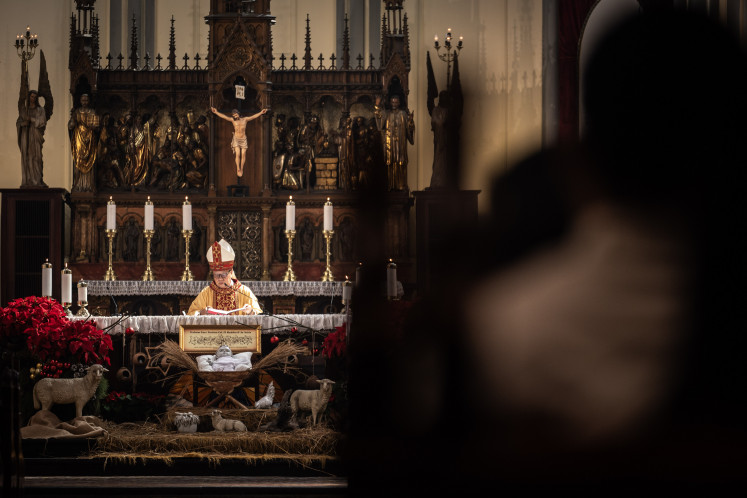Popular Reads
Top Results
Can't find what you're looking for?
View all search resultsPopular Reads
Top Results
Can't find what you're looking for?
View all search resultsThomas Sigar, Reviving the lost treasure of Minahasa
Anyone can consider Indonesia's rich textile processing culture as a treasure for the generations to come
Change text size
Gift Premium Articles
to Anyone
A
nyone can consider Indonesia's rich textile processing culture as a treasure for the generations to come.
One such treasure is Minahasa's bentenan and pinatikan weavings, which have raised textures, similarly found on tapestry weaving. It is unique because it does not have golden thread, which is commonly found in the Western part of Indonesia
Minahasa weavings also have snake patterns on the edge of the fabric. In the Minahasa belief system, the snake is a representative of rice guardian gods.
However, the unique Minahasa weaving had slowly diminished after the European visit to Minahasa. The visit not only brought Christianity to the area but also new fashions. As a result, Minahasa people stopped wearing the traditional woven fabric and short-sleeved loose shirt, and started wearing mermaid-like outfits.
Instead of mourning for the lost art, the North Sulawesi Art and Culture Institute cooperated with designer Thomas Sigar to bring the traditional weaving back to life.
It was rather difficult to learn about Minahasa weavings because only around 43 pieces existed, with one displayed in Jakarta National Museum and four others in a museum in the Netherlands.
Thomas spent an intensive six years researching and studying the weaving patterns. He then worked with Balinese weaving artisans to produce the fabric. For the fabric distribution, he cooperated with PT Bilina Bina Cendekia. While preserving traditional weaving art, they tried to invent new patterns from existing sources. They finally came out with three new patterns: pina wetengan, pina bia and pina tembega.
Pina wetengan is taken from the figures of man and natural forces found on Watu Pina Wetengan, an ancient 3,000-year-old rock in Tompaso district.
The second pattern is pina bia, taken from Minahasa's musical instrument bia, which is also a Minahasa word for shell. Therefore, shells, starfishes and other Minahasa's marine beauties are now put into the weaving.
The pina tembega pattern came from tembega, an accessory worn by Minahasa men during war.
After using the new patterns in woven fabric or handmade printed fabric on chiffon and silk, Thomas turned them into 30 sets of clothes for men and women.
The fashion show displaying the clothes was divided into two phases: Malalayang - Message of The Sea and Lumimuut.
Taken from the name of a coastal area near Manado, the Malalayang collection was a reflection of the sea scenery when the sun touches down on the horizon. The pattern used was pina bia.
The collection has the soft and flowing look, such as pleat skirt, frill shirt, winged halter dress, one-shoulder dress and hooded tunic smoothed on the waist.
The clothes, made from the soft and flowing chiffon and silk, came in cream, maroon and purple, with dusty shades. The clothes were paired with copper-colored accessories of replica tembega.
The second part of the show was Minahasa legend Lumimuut, the name of the Chinese Emperor's daughter who was banished to North Sulawesi. As the sequence title hinted, the clothes had Chinese influence with loose cheongsam and high-collared shirt taking the runway.
On this sequence, the clothes applied with pina wetengan, pina bia and pina tembega patterns on cream and green woven silk.










